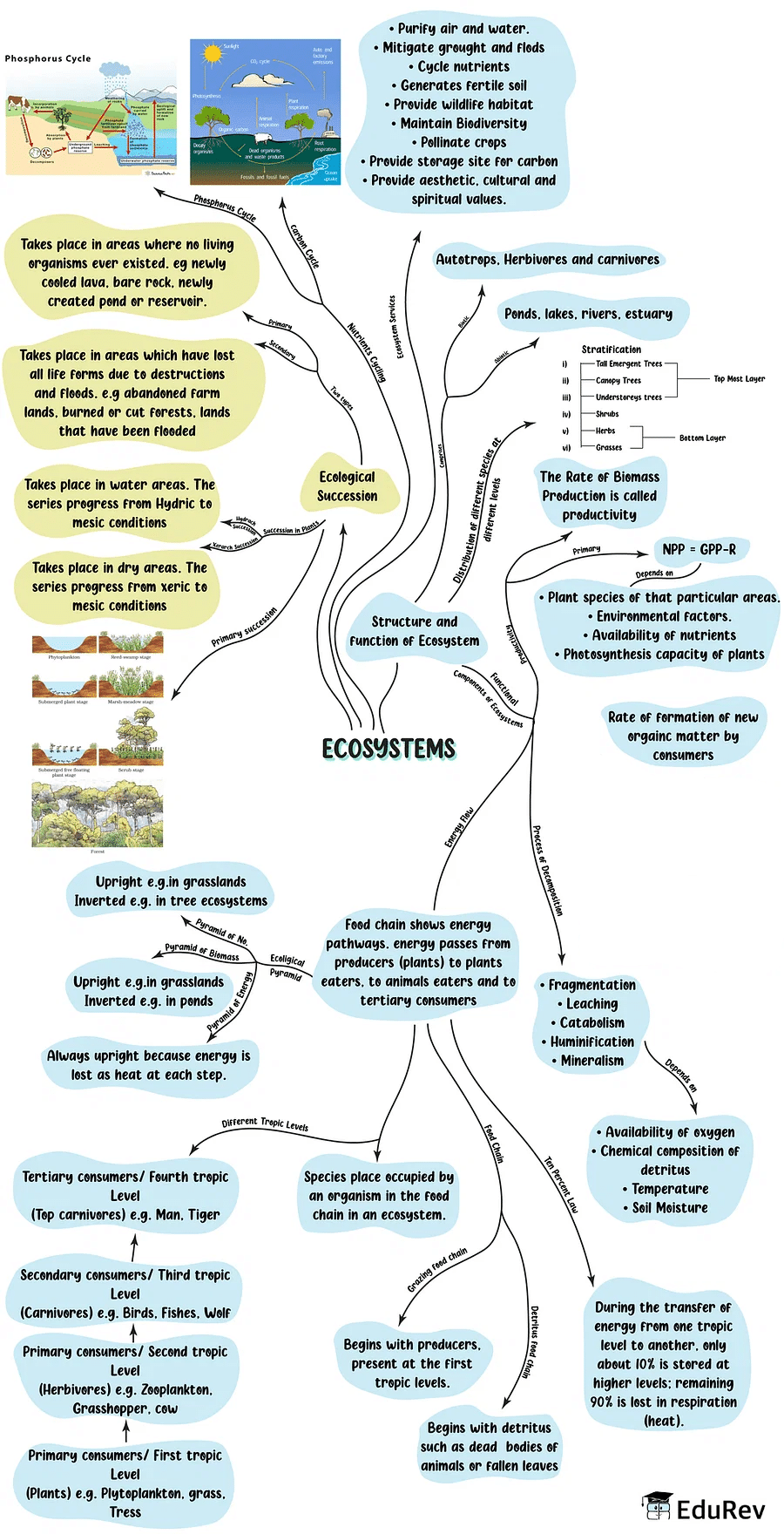UPSC Exam > UPSC Notes > Class 6 to 12 NCERT Mindmaps for UPSC Preparation > Mind Map: Ecosystems
Mind Map: Ecosystems | Class 6 to 12 NCERT Mindmaps for UPSC Preparation PDF Download

The document Mind Map: Ecosystems | Class 6 to 12 NCERT Mindmaps for UPSC Preparation is a part of the UPSC Course Class 6 to 12 NCERT Mindmaps for UPSC Preparation.
All you need of UPSC at this link: UPSC
FAQs on Mind Map: Ecosystems - Class 6 to 12 NCERT Mindmaps for UPSC Preparation
| 1. What is an ecosystem? |  |
An ecosystem is a community of living organisms, such as plants, animals, and microorganisms, interacting with each other and their physical environment. It includes both biotic (living) and abiotic (non-living) components that work together to maintain a balanced and harmonious system.
| 2. How do ecosystems function? |  |
Ecosystems function through the intricate web of relationships between organisms and their environment. Producers, such as plants, convert sunlight into energy through photosynthesis. Consumers, such as animals, feed on producers or other consumers. Decomposers break down organic matter and recycle nutrients back into the system. This interconnectedness allows for the flow of energy and cycling of nutrients within the ecosystem.
| 3. What are the different types of ecosystems? |  |
There are various types of ecosystems, including forests, grasslands, deserts, wetlands, coral reefs, and freshwater ecosystems like lakes and rivers. Each ecosystem has its own unique set of characteristics, species, and adaptations that enable them to thrive in their specific environment.
| 4. Why are ecosystems important? |  |
Ecosystems are essential for maintaining the balance of nature and providing various benefits to human beings. They help regulate climate, purify air and water, provide habitats for wildlife, support pollination and seed dispersal, and contribute to the overall health and well-being of the planet. Ecosystems also offer recreational and cultural values, including opportunities for outdoor activities and aesthetic enjoyment.
| 5. What are the threats to ecosystems? |  |
Ecosystems face numerous threats, including habitat destruction, pollution, climate change, invasive species, overexploitation of natural resources, and human activities such as deforestation, industrialization, and urbanization. These threats can disrupt the delicate balance within ecosystems, leading to the loss of biodiversity, degradation of ecosystem services, and potential collapse of the entire system. It is crucial to protect and conserve ecosystems to ensure their long-term sustainability and the well-being of all life forms.
Related Searches
















